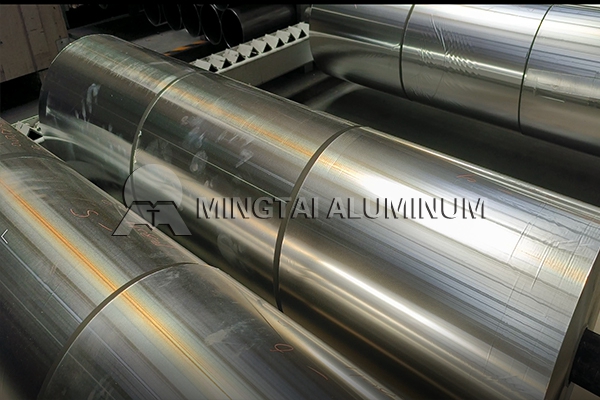
customize your solutions request a quote right now!
Material Application: Electronics
Product: 1070 aluminum foil, 1100 aluminum foil
Project Details:
In the field of electronics manufacturing, foil for electronics has become a vital enabler of industry growth. Whether in consumer electronics like smartphones and tablets or critical components of new energy vehicles and aerospace equipment, foil materials play an irreplaceable role. With continuous technological advancements, the performance requirements for foil in electronics are becoming increasingly stringent, making the selection of the right foil a pressing challenge for manufacturers. This article will analyze key selection criteria from multiple perspectives.
Different electronic products have distinct requirements for foil. For example, in capacitor manufacturing, pure aluminum foil is commonly used as an electrode material due to its high conductivity and excellent ductility, which meet capacitor performance demands. In high-frequency circuits and high-speed transmission applications, copper foil is preferred for its superior conductivity and signal stability. Additionally, specific alloy foils are widely used in electronics.
For instance:
- 1070 pure aluminum foil: With ultra-high purity (over 99.7% aluminum content), it offers excellent conductivity, thermal conductivity, and corrosion resistance, making it ideal for high-purity components like precision electronic sensors.
- 1100 aluminum foil: Known for its excellent workability and formability, it is often used in electromagnetic shielding applications, such as electronic device shielding covers.
Clearly defining the application scenario is the first step in selecting the right foil material.
When selecting foil for electronics, key performance metrics must be prioritized:
- Pure aluminum foil: Purity (typically above 99.6%), specific capacitance, and tensile strength.
- Copper foil: Conductivity, thickness uniformity, and surface roughness.
- Alloy foils (e.g., 1070, 1100): The impact of alloy composition on performance must also be evaluated.
Additionally, foil thickness and width should match specific needs. For example, ultra-thin aluminum foil (less than 20μm) suits flexible electronics, while thicker foils are better for high mechanical strength applications.
Production processes directly influence foil quality. High-performance electronic foil requires precision rolling, heat treatment, surface treatment, and other advanced techniques.
- Precision rolling ensures uniform thickness and smooth surfaces.
- Optimized heat treatment enhances crystal structure and mechanical properties.
- Strict quality control is critical to minimizing defects and improving production efficiency.
Choosing suppliers with advanced manufacturing and robust quality management systems is essential for reliable performance.
As a leader in China's aluminum processing industry, Henan Mingtai Aluminum has deep expertise in electronic aluminum foil. Its product range includes various pure and alloy foils, such as the aforementioned 1070 and 1100 alloys, all produced using internationally advanced processes. With purity up to 99.7%, Mingtai’s foils exceed industry standards in conductivity and mechanical performance.
Certified under ISO 9001, Mingtai’s foils are widely used by global electronics brands. For customers prioritizing high quality and stability, Mingtai’s electronic aluminum foil is a trusted choice, delivering exceptional performance assurance for electronic applications.
Hot Sale Products
Aluminum foil for takeout containers Aluminum foil for cosmetic bottle caps Lidding aluminum foil Aluminum foil for sealing gasket Cable Aluminum Foil 6061 aluminum foil Milk Powder Can Lid Aluminum Foil
Solutions
Aluminum Foil for Cold Chain: Insulation and Barrier Tips Purchasing Food Safe Aluminum Foil Jumbo Rolls? 5 Key Factors for You Top Questions to Ask an Aluminum Foil Supplier How does 8011 aluminum foil vs pure aluminum foil differ? Why Choose 3004-H18 Aluminum Foil for Structural Strength? How laminated packaging material 8011 Al foil preserves food? How Does Aluminum Foil for Electronics Shielding Work? What Affects Aluminum Foil Wholesale Price Most?
Quick Contact
Copyright © 2022 Mingtai Aluminum All Rights Reserved.